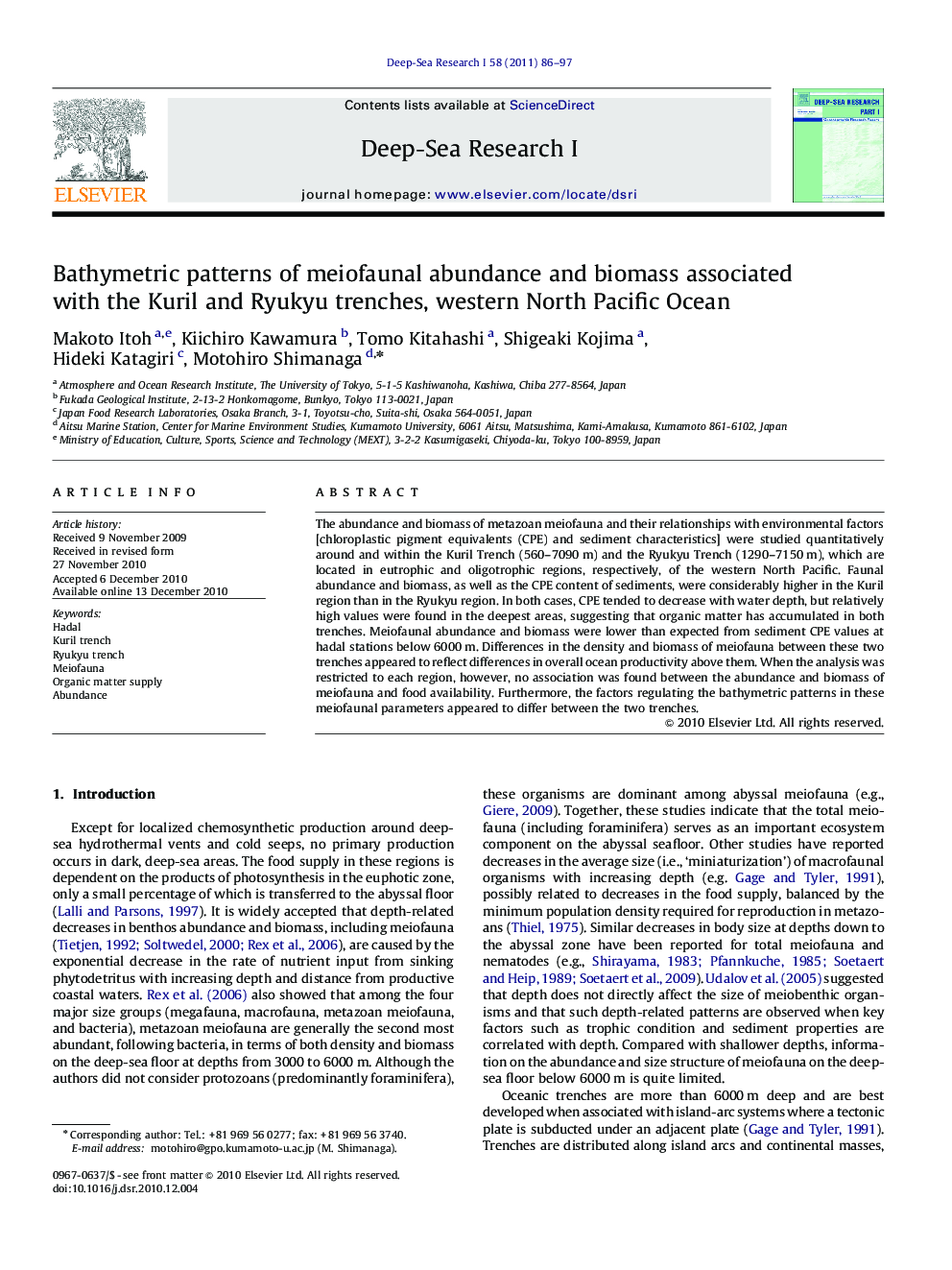| Article ID | Journal | Published Year | Pages | File Type |
|---|---|---|---|---|
| 4534943 | Deep Sea Research Part I: Oceanographic Research Papers | 2011 | 12 Pages |
The abundance and biomass of metazoan meiofauna and their relationships with environmental factors [chloroplastic pigment equivalents (CPE) and sediment characteristics] were studied quantitatively around and within the Kuril Trench (560–7090 m) and the Ryukyu Trench (1290–7150 m), which are located in eutrophic and oligotrophic regions, respectively, of the western North Pacific. Faunal abundance and biomass, as well as the CPE content of sediments, were considerably higher in the Kuril region than in the Ryukyu region. In both cases, CPE tended to decrease with water depth, but relatively high values were found in the deepest areas, suggesting that organic matter has accumulated in both trenches. Meiofaunal abundance and biomass were lower than expected from sediment CPE values at hadal stations below 6000 m. Differences in the density and biomass of meiofauna between these two trenches appeared to reflect differences in overall ocean productivity above them. When the analysis was restricted to each region, however, no association was found between the abundance and biomass of meiofauna and food availability. Furthermore, the factors regulating the bathymetric patterns in these meiofaunal parameters appeared to differ between the two trenches.
Research highlights► The abundance and biomass of metazoan meiofauna and their relationships with environmental factors were studied around the Kuril Trench and the Ryukyu Trench. ► Organic matter suggested to be accumulated in both trenches. ► No association was found between the abundance and biomass of meiofauna and food availability in any trench. ► The factors regulating the bathymetric patterns in these meiofaunal parameters appeared to differ between the two trenches.
